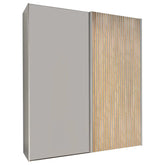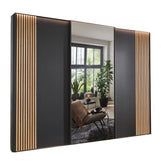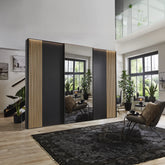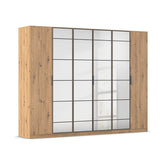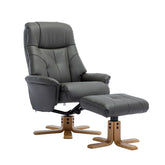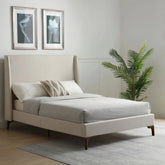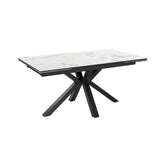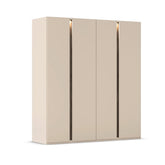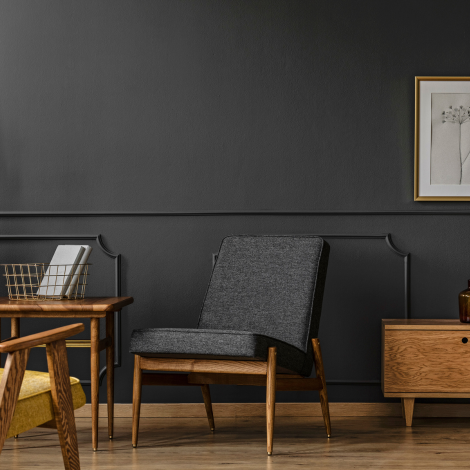When it comes to choosing a new sofa, two materials dominate the conversation: fabric and leather. Both offer unique advantages in terms of comfort, appearance, and longevity. But how do you know which one is right for your home? Whether you're considering a grey fabric sofa, a soft-touch fabric recliner sofa, or a sleek leather set, the decision often comes down to lifestyle, design preferences, and budget.
Comfort and Feel
Fabric sofas are generally softer and more inviting to the touch. They offer a cosier feel, especially during colder seasons, making them a popular choice in British homes. The upholstery tends to be more breathable, allowing air to circulate and preventing that sticky feeling during summer. Leather sofas, while elegant and durable, can feel cold in winter and warm in summer. However, high-quality leather adapts better to temperature changes over time. If daily lounging is your priority, fabric sofas tend to feel more relaxed and accommodating.
Appearance and Style
A leather sofa often creates a bold statement and lends itself well to modern, minimalist, or industrial interiors. It offers a sleek and polished look, which can elevate a room instantly. Fabric sofas, on the other hand, come in a wider variety of colours, patterns, and textures. Whether you want a 3 seater fabric sofa in neutral tones or a fabric corner sofa in a striking shade, fabric gives you more creative freedom. It’s easier to match with rugs, curtains, and other soft furnishings.
Maintenance and Cleaning
Leather is easier to wipe clean, which makes it suitable for homes with children or pets. Spills can often be removed with a damp cloth, and leather doesn't absorb odours as easily. However, it does require regular conditioning to prevent cracking. Fabric sofas need a bit more care. Most come with stain-resistant treatments, but some fabrics can still absorb liquids or attract dust. Many fabric sofas UK buyers choose models with removable covers to allow for easier cleaning and machine washing. Regular vacuuming also helps keep fabric looking fresh.
Durability and Longevity
Both materials are durable, but their longevity depends on use and care. High-quality leather can last decades and even develop a desirable patina over time. It's naturally resistant to wear and tear but can be prone to scratching. Fabric durability varies depending on the type used. Microfibre, polyester blends, and chenille are among the toughest, especially for high-traffic households. For homes that see a lot of use, such as with pets, kids, or frequent guests, a hardwearing fabric recliner sofa with a tough woven finish can offer years of reliable comfort.
Price and Value
Generally, leather sofas are more expensive than fabric ones. The higher upfront cost reflects the material’s durability and luxurious appeal. However, the price gap has narrowed in recent years. Quality fabric sofas are now widely available at excellent value, making them more accessible for families or first-time buyers. A well-made 3 seater fabric sofa can look just as stylish and last nearly as long as a comparable leather version — with a much smaller investment.
Practicality in Everyday Life
Fabric sofas win out in homes where comfort and flexibility are top priorities. Many come in modular designs, recliners, and corner units with added storage. For example, a two seater recliner fabric sofa is ideal for flats or smaller rooms without sacrificing comfort. Leather is less customisable and can feel more rigid in design. It’s better suited to formal living spaces or those aiming for a more polished aesthetic. Your choice ultimately depends on whether you prioritise tactile comfort and variety (fabric), or low-maintenance elegance (leather).
Environmental Impact
If sustainability matters to you, fabric sofas often present more eco-conscious options. Many models are now made using recycled materials, organic cotton, or low-impact dyes. Leather, particularly genuine leather, involves animal products and a chemical tanning process that can have environmental consequences. That said, because leather lasts longer and wears slowly, it may require fewer replacements over time.
Final Verdict
There’s no one-size-fits-all answer when it comes to fabric vs. leather sofas. Fabric offers unbeatable variety, warmth, and comfort — ideal for everyday family use. Leather, in contrast, delivers timeless style and easier maintenance, especially in high-end interiors. For most households in the UK, fabric sofas strike a better balance between comfort, affordability, and customisation. Whether you’re leaning towards a cosy grey fabric sofa or a modern fabric recliner, the key is to choose what aligns with your lifestyle.
FAQs
1. Which lasts longer: fabric or leather?
Leather generally lasts longer with proper care, but high-quality fabric sofas can also offer long life if maintained well.
2. Are fabric sofas easier to customise?
Yes. Fabric sofas come in many colours, patterns, and configurations, making them easier to match with décor.
3. Do fabric sofas stain easily?
Some do, but many are treated with stain-resistant finishes. Opting for removable covers makes cleaning easier.
4. Is leather better for homes with pets?
It depends. Leather is easier to clean, but it can scratch easily. Tough woven fabrics may be more pet-friendly in the long run.
5. Which is more affordable for a 3 seater sofa?
Fabric sofas are typically more budget-friendly compared to leather alternatives of the same size and build quality.
